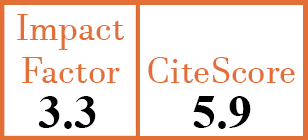Full Papers
Sustained moderate-to-high disease activity and higher Charlson score are predictors of incidental serious infection events in RA patients treated with conventional disease-modifying anti-rheumatic drugs: a cohort study in the treat-to-target era
G. Galicia-Hernández1, F. Parra-Salcedo2, P. Ugarte-Martínez3, I. Contreras-Yáñez4, A. Ponce-De-León5, V. Pascual-Ramos6
- Department of Internal Medicine, Instituto Nacional de Ciencias Médicas y Nutrición Salvador Zubirán, Tlalpan, México.
- Department of Internal Medicine, Instituto Nacional de Ciencias Médicas y Nutrición Salvador Zubirán, Tlalpan, México.
- Department of Immunology and Rheumatology, Instituto Nacional de Ciencias Médicas y Nutrición Salvador Zubirán, Tlalpan, México.
- Department of Immunology and Rheumatology, Instituto Nacional de Ciencias Médicas y Nutrición Salvador Zubirán, Tlalpan, México.
- Department of Infectious Diseases, Instituto Nacional de Ciencias Médicas y Nutrición Salvador Zubirán, Tlalpan, México.
- Department of Immunology and Rheumatology, Instituto Nacional de Ciencias Médicas y Nutrición Salvador Zubirán, Tlalpan, México. virtichu@gmail.com
CER8761
2016 Vol.34, N°2
PI 0261, PF 0269
Full Papers
Free to view
(click on article PDF icon to read the article)
PMID: 26939612 [PubMed]
Received: 07/07/2015
Accepted : 26/10/2015
In Press: 03/03/2016
Published: 13/04/2016
Abstract
OBJECTIVES:
Rheumatoid arthritis (RA) guidelines have moved toward intensive treatment aimed at remission. Treatment and disease activity are predictors of infections; patients from developing countries have additional predictors that may further impact the infection spectrum. Our aim was to describe serious infection events (SIEs), predictors and impact on RA outcomes, in a cohort of Mexican Mestizo patients.
METHODS:
Up to February 2015, charts from 176 early RA patients were reviewed by a single data abstracter. SIEs were defined according to strict criteria. RA patients with ≥1 SIE up to last follow-up were considered cases. Descriptive statistics were used; cases and paired controls (no SIE up to last follow-up) were compared by uni-variate analysis and multiple logistic regression.
RESULTS:
The cohort contributed to 948 patient-years of follow-up. There were 34 SIEs in 15 patients, at a (mean±SD) follow-up of 5±4 years. Incidence rate of SIE was 8.7 infections per 100 patient-years. Twenty-four isolated SIE were present in 14 patients. The most frequent SIEs were complicated urinary tract infections and pneumonia (each, n=8) and soft-tissue infections (n=7). In the case-control analysis, higher Charlson score (OR: 2.04, 95%CI: 1.001-4.164, p=0.05) and higher cumulative DAS28 (OR: 3.08, 95%CI: 1.91-4.98, p=0.000) were predictors of SIE; in patients with at least moderate disease activity, risk of SIE increased with higher level of cumulative disease activity. However, SIEs did not impact subsequent DAS28, HAQ and SF-36.
CONCLUSIONS:
Comorbidity and cumulative disease activity increased serious infection risk in early RA patients treated with conventional drugs, but SIEs did not impact disease outcomes.


